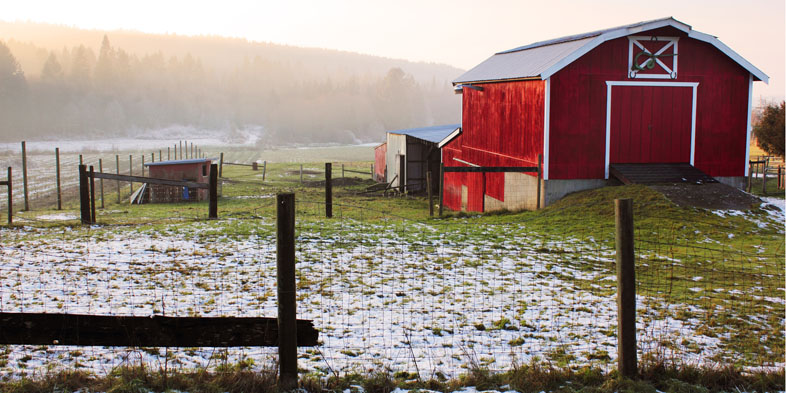Authors
Partner, Litigation; Regulatory, Indigenous and Environmental, Toronto

The B.C. Court of Appeal in Baker v. Rendle, 2017 BCCA 72, dismissed an appeal from a lower court decision denying class certification of a private nuisance claim, finding that a class proceeding was not the “preferable procedure” and underscoring the difficulties of pursuing environmental class actions based in nuisance.
Background
The defendants owned and operated a Vancouver Island farm, and had obtained a composting facility licence to import and compost post-consumer waste. Numerous complaints relating to the composting operation were received, and the farm’s composting licence was subsequently suspended.
The plaintiff, whose property was adjacent to the defendants’ farm, commenced a class action based in the tort of private nuisance against the defendants.
Chambers Judge’s Decision
The chambers judge denied class certification of the nuisance claim, finding that three of the five certification requirements had not been satisfied.
- The “common issues” requirement was not satisfied, as the individual issues “outweigh and overwhelm” the common issues of the proposed class. The chambers judge cast the plaintiff’s issues as “common… [but] not central… or… central but not common.” While he accepted that resolving some of the common issues may be of marginal assistance, he held that they would not meaningfully advance the litigation.
- A class proceeding was not the “preferable procedure” for resolving the common issues. The nature of the claims “meant that individual issues would arise early in the litigation” and make the proposed class action “unjustifiably complicated”.
- The plaintiff was not an appropriate representative plaintiff. While the plaintiff used his property as a home and horse-riding centre, the proposed class included owners of suburban, commercial, and industrial developments, as well as other commercial agricultural businesses, which lead to concerns that the proposed representative plaintiff’s interests may conflict with other class members.
B.C. Court of Appeal Decision
The B.C. Court of Appeal first reviewed the elements of proof for the tort of private nuisance, which were affirmed by the Supreme Court in Antrim Truck Centre Ltd. v. Ontario (Transportation), 2013 SCC 13. The Court of Appeal noted:
[41] In summary, the requirements for proof of private nuisance are two-fold. First, a plaintiff must prove a substantial, non-trivial interference with his use and enjoyment of his property. Second, he must establish that the interference is unreasonable. The focus is primarily on the effect on the complainant rather than on the alleged tortfeasor’s conduct (Antrim at para. 28). Thus, contrary to the appellant’s submission in this Court, a measure of subjectivity exists even at the stage of determining whether liability exists, and not merely when determining the extent of liability. [Emphasis added]
Second, the Court of Appeal found that common issues in the conduct of the defendant existed, such that the common issues certification requirement had been met, but the Court ultimately concluded that a class proceeding was not the preferable procedure. Assessing liability for nuisance involves subjective considerations that are particular to each proposed class member – namely, the effect of the defendant’s conduct on each proposed class member. The Court held that resolving the common issues would, therefore, only negligibly advance the litigation as a whole, and consequently that a class proceeding could not be the preferable procedure in the circumstances:
[50] On the other hand, I cannot distinguish this case from Hollick. I agree with the chambers judge that resolution of the proposed common issues, particularly common issue (f), will not significantly advance the action as its focus is entirely on the tortfeasor’s conduct. The effect of that conduct as to time, intensity, and interference with activities (which lies at the core of the question of liability) is entirely subjective and variable. Like Hollick it is possible to say that there are common issues, assuming the appellant could tender evidence as to the measurement of air quality at various times. Thus s. 4(1)(c) of the CPA [i.e. the common issues requirement] is satisfied. The flaw in the appellant’s case is that such a common question does not advance the litigation. It is negligible in terms of the individual issues. I conclude that the chambers judge did not err in finding that a class action was not a preferable procedure to advance this litigation, and thus s. 4(1)(d) of the CPA [i.e. the preferable procedure requirement] is not satisfied.
[51] In my view, this claim is better suited to being pursued as a multi-party claim pursuant to Rule 22-5 of the Supreme Court Civil Rules. [Emphasis added]
As the proposed class action failed to satisfy the preferable procedure requirement, the appeal was accordingly dismissed.
Implications
The B.C. Court of Appeal’s decision in Baker highlights the challenges in pursuing environmental class actions based in nuisance. As highlighted in a prior blog post, Rougher Waters to Come for Environmental Class Actions?, the Court's ruling in Baker falls into the long line of court decisions, such as the Nova Scotia Court of Appeal's decision in Canada (Attorney General) v. MacQueen, 2013 NSCA 143, where attempts to certify environmental causes of action, like nuisance, have failed to succeed.
That said, class actions based in nuisance may have greater prospects for certification where (or, rather, if) the question of substantial interference with property can be determined on a generic (as opposed to individual) basis, as was the case in Gautam v. Canada Line Rapid Transit Inc., 2011 BCCA 275 (which the court in Baker cited).
